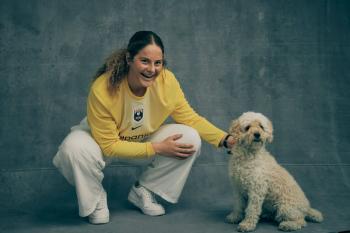
4 steps for designing to control noise
Before you build, keep barking noise at bay with these tips.
Noise from barking is a frustrating problem that is difficult to solve after you've constructed a facility-so it's important to think about it early on in the hospital design process. To properly control noise, you must first consider behavioral control, then reverberation control, and finally, transmission control. Here's some tips for reducing noise in your new clinic from Scott Learned, PE, LEED AP, at the 2012 Hospital Design Conference held in conjunction with
1. Plan. Behavioral control starts with the animal facilities engineer reviewing the architectural floor plan for problems with doorways, adjacencies, and flow paths that will cause barking in the first place. There are many subtleties to this analysis. Even issues such as smells from food preparation locations or audible parking lot areas will engender barking from a dog ward. Masking noise, small groups of dogs, leash control during exercise periods, and proper floor planning can considerably reduce or eliminate barking in the first place.
2. Consider reverberation. Within rooms, particularly dog wards or kennels, reverberation is a problem. Regardless of vendor claims, only about 25 percent to 50 percent of barking noise can be mitigated by surface treatments. Unlike human spaces, such as offices or retail stores, most of the noise within a dog ward is directly projected to your ears and not reflected off of surfaces. Also be aware that products with good reverberation control (high noise reduction coefficients) are poor at transmission control and vice versa.
3. Determine your STC. Between rooms, noise is measured by sound transmission class or STC. This is a difficult number to determine because it requires lab testing of the wall or door or window assembly in its entirety. Someone cannot tell you that simply adding a layer of wallboard, for example, will add a specific amount of STC regardless of the construction of the wall. Each total wall assembly is unique and there are tables of STC values for literally hundreds of wall assemblies available. However, doors and windows are far worse in transmission control than walls. It's the doors, windows, and poor construction choices that can ruin an attempt to create a sound-controlled space.
4. Encourage teamwork. It's appropriate for the animal care engineer to provide the wall and ceiling design details to the architect for those critical areas and specify doors and windows that have both excellent acoustic performance as well as tolerance of the animal care environment.
Newsletter
From exam room tips to practice management insights, get trusted veterinary news delivered straight to your inbox—subscribe to dvm360.






